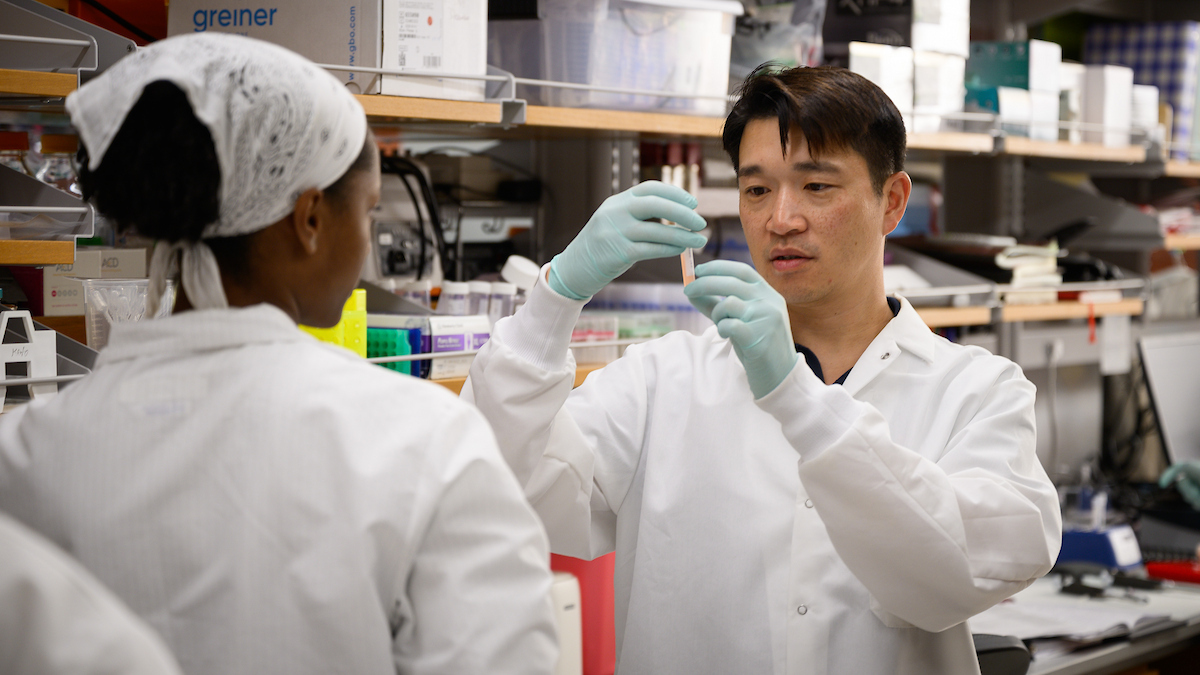State-of-the-Art Dairy Barn a Cool Addition to NC State Veterinary Campus
The new facility is the peak of efficiency, with a waste-disposal system, hydraulic gates, data-collecting technology and room to double the milking capacity and triple the observation space for students.
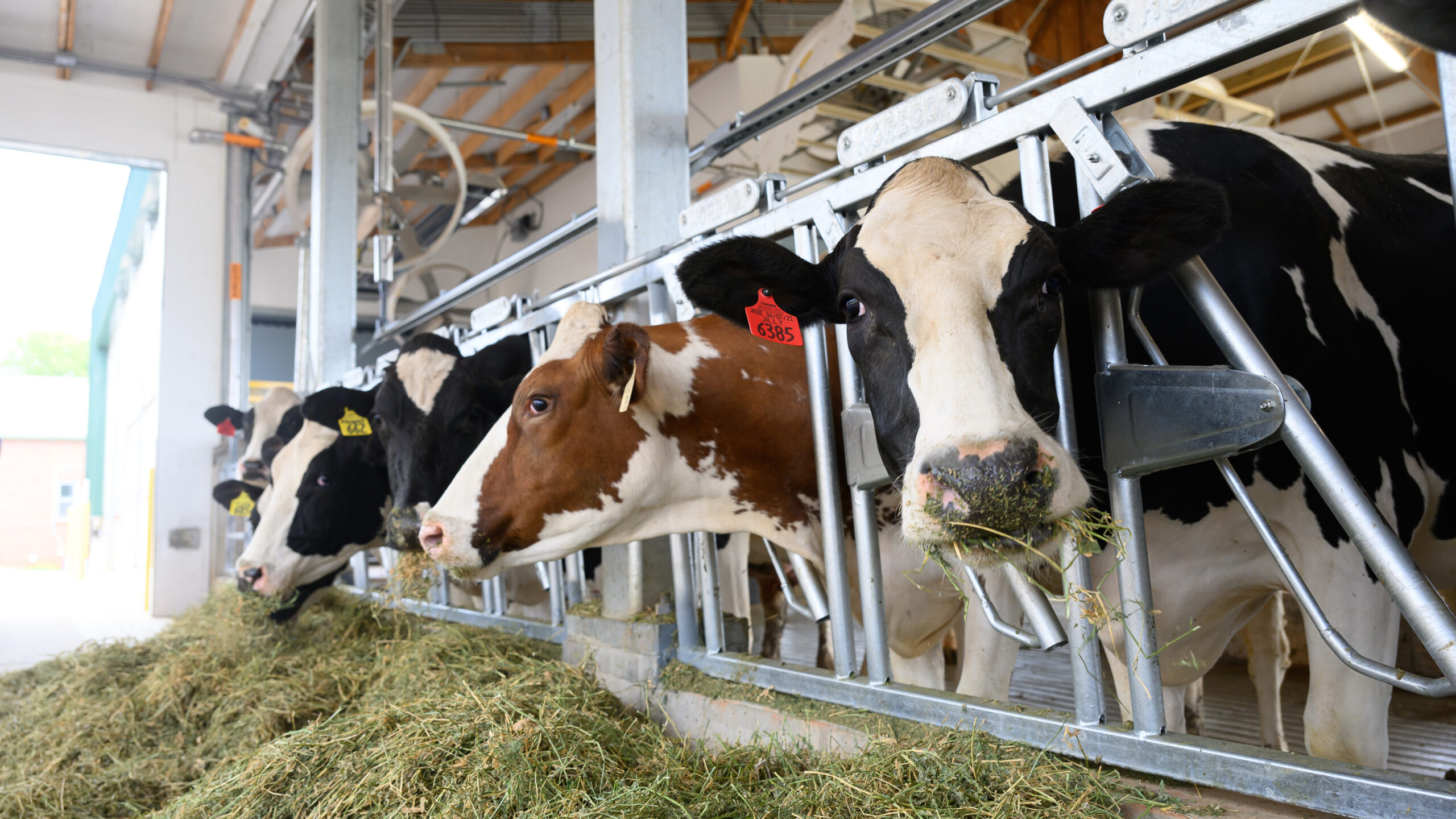
Inside the new dairy barn on the NC State College of Veterinary Medicine campus, creature comforts include 15 industrial-size fans that knock 20 degrees off the suffocating summer heat and sprinklers that sporadically mist the milk makers as they munch alfalfa.
The cows clearly are content with their new digs, and Dr. Allison West, clinical veterinarian at the Teaching Animal Unit where the dairy barn just opened, is ecstatic that the state-of-the-art dairy and teaching facility is ready just as veterinary students return to campus for the fall semester.
“It’s a very stark contrast,” says West, comparing the new sleek, tin-roofed space with the old barn, built in the 1930s. “It’s about 50 to 60 years of updated technology happening in this building. I mean, personally, I enjoy palpating cows in the fans so much more.”
The college broke ground on the new dairy facility, constructed with the support of the R.B. Terry Charitable Foundation, in late 2021. It replaces a milking parlor and barn built as part of the Works Progress Administration after the Great Depression. Those storied structures are still on campus, and the college is considering renovating the historic barn into multifunctional teaching spaces.
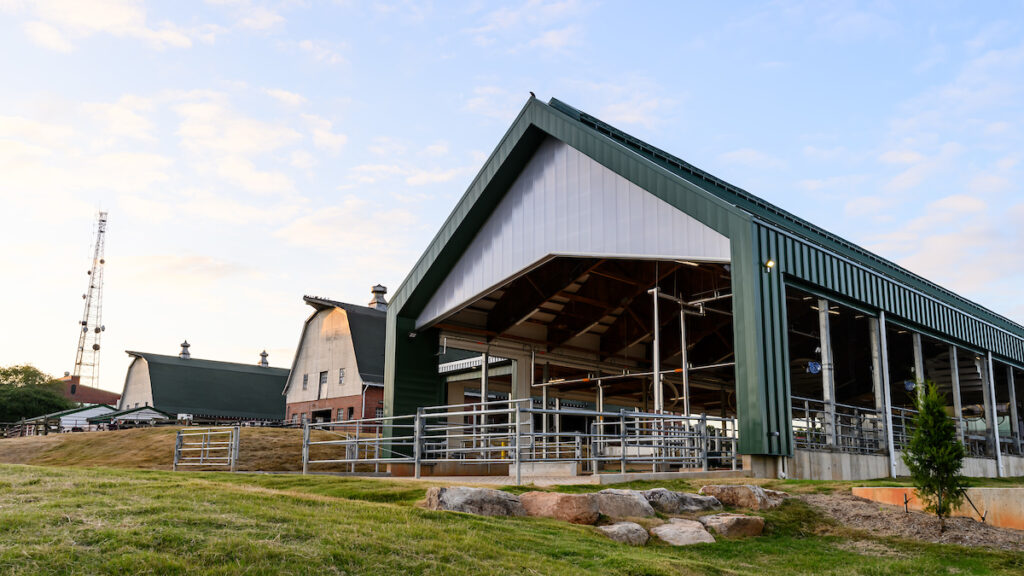
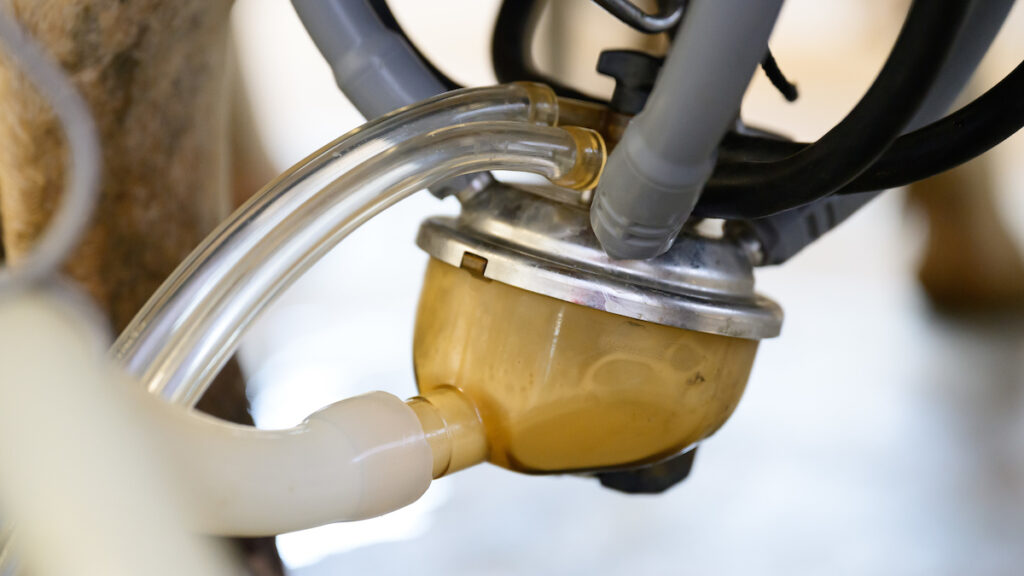
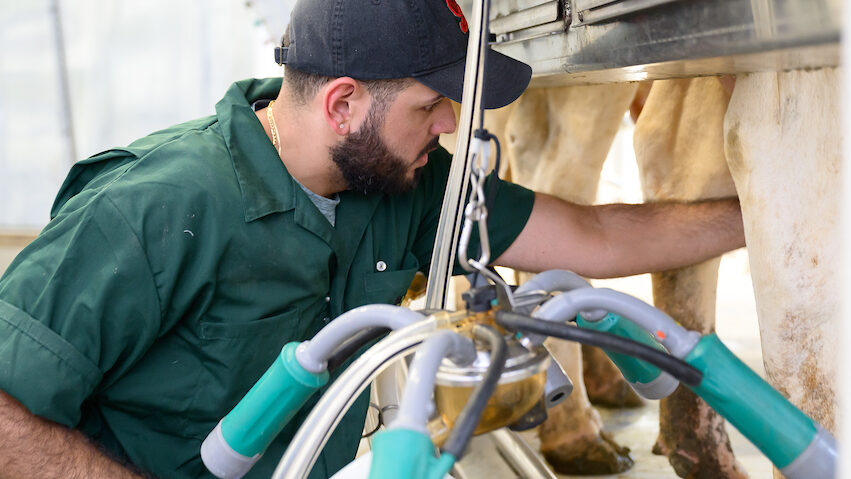
In a state where the agricultural and food industry reached a milestone of $88.5 billion in economic impact in 2023, maintaining farm animal teaching opportunities that train veterinarians-to-be in the latest technology is essential at North Carolina’s only veterinary college, West says.
“I think the new space will really pique interest in where the dairy industry could go because our building is designed to maximize cow comfort and be responsible with our waste and efficient with our milking,” she says. “Hopefully, it will inspire more students to go into large animal medicine, too.”
Perks of the Moove
The updated facility includes a best-practice waste-disposal system, a well-designed dairy operation with hydraulic gates, data-collecting technology that expands research opportunities, and enough room to double the milking capacity and triple the teaching and observation space for students learning more about farm animal medicine.
Previously, the college captured cow waste and used it as fertilizer on the fields of the Teaching Animal Unit’s 80-acre working farm. Now, a disposal system washes the waste from the concrete dairy floor into pipes flowing to a new building, where the solids are separated and dried. The college sells the waste to a company that hauls it away as compost.
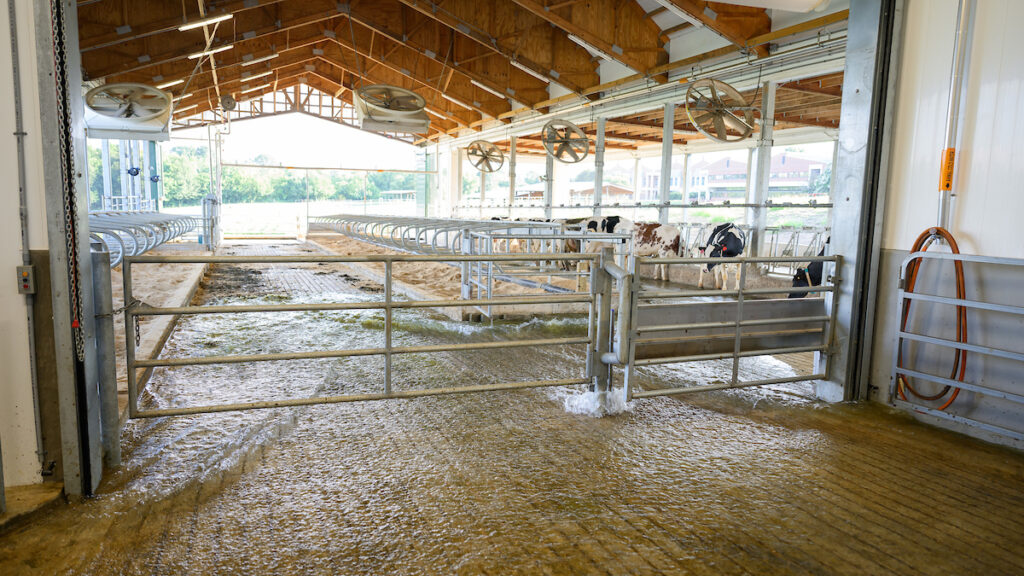
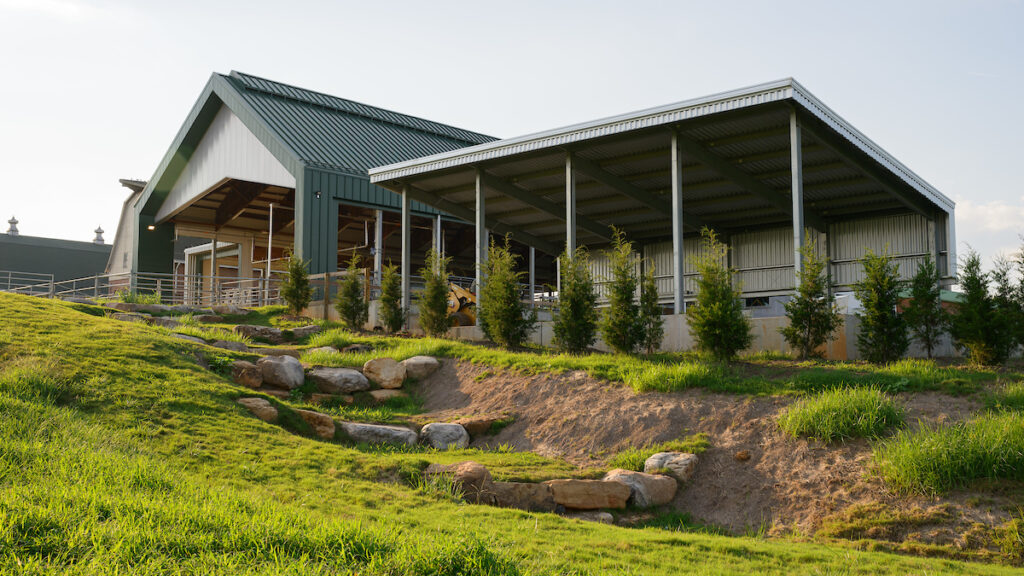
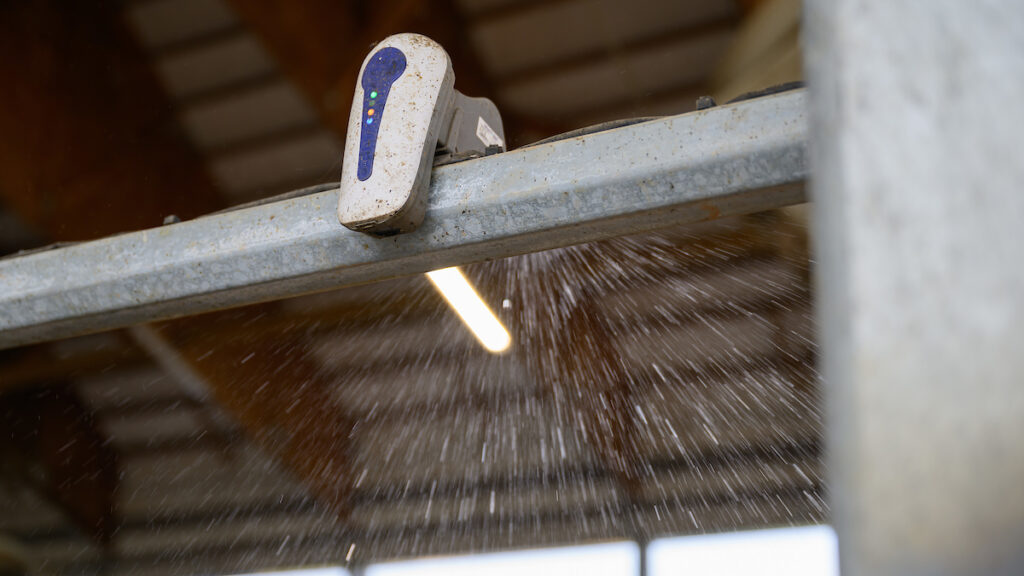
The cows also are wearing collars, which West calls “cow Fitbits,” that capture all sorts of information — such as food intake, daily mobility and fertility — that could potentially lead to new research projects and an even more efficient dairy operation.
“The collar automatically tracks their number and how much milk they’re producing,” she says. “It also tracks how much they’re eating, how much they’re ruminating, how much they’re lying down — so we can catch a problem 24 to 48 hours before our girls actually look sick.”
West has delighted in discovering the unexpected ways the new facility helps her team keep the cows healthy.
“Cows are basically just dry fermentation on four legs, and they get really hot because they’re producing so much energy,” she says. “So with the cooler space, we’ve had increased conception rates, decreased metabolic disease, decreased respiratory disease because they’re not hot. And it’s decreasing foot problems because they’re on concrete, so it’s helping all around.”
Inside the open-air barn also are free stalls with sand where the cows can dig out places to rest. Sand is naturally antimicrobial, so it helps decrease mastitis, one of the most common medical problems in dairy cows.
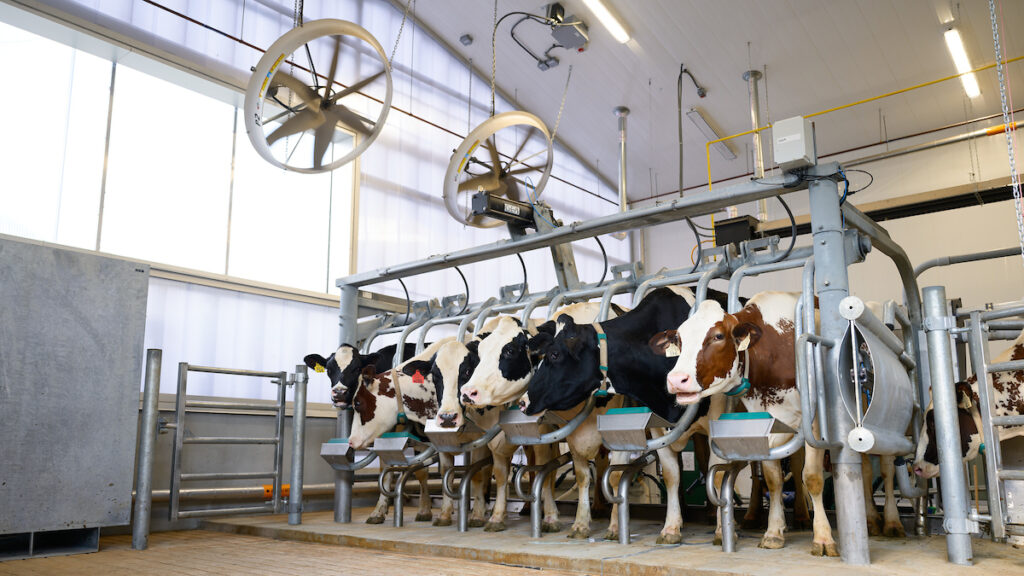
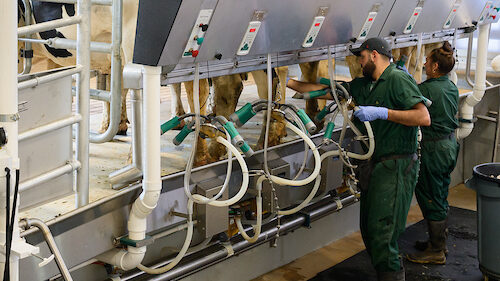
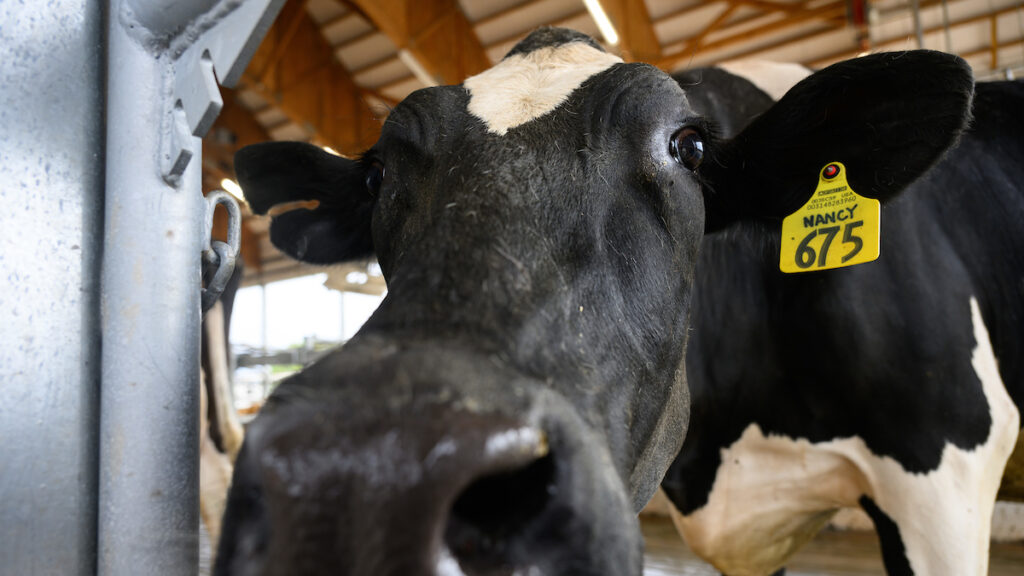
Oh, and the fans circulating the air also decrease the number of flies tormenting the cows and their caretakers, too.
“All I can say is that this project means happy cows,” says Mike Veach, dairy farm manager. “They are clean, cool and comfortable in this new barn.”
‘Leading the Way’
The bigger, modern milking parlor has increased the number of cows that can be milked at once from three to six and the number of students who can observe the operations from two to at least 10. The cows, milked twice a day at 6 a.m. and 6 p.m., are much more accessible to their caretakers, strengthening safety for everyone.
“Their heads are facing away from us, and the udders are available, so it’s so much easier to do everything, like milk-quality sampling or a mastitis check,” West says. “And it’s very clean, too.”
The dairy cows, which top 40 in number with the recent calving season, produce an average of about 70 pounds of milk a day. The college is part of the Maryland & Virginia Milk Producers Cooperative Association, which picks up the milk two or three times a week, pasteurizes it and distributes it to area grocery stores and coffee shops.
West and Veach are excited to see just how efficient they can make the operation, imagining that they’ll learn to use the state-of-the-art facility and equipment in new ways that other dairies can emulate.
“As we continue to lose farms across the state and across the country to urbanization, it’s just nice to see agriculture being invested in from anywhere,” West says. “I love that a land-grant institution is leading the way.”
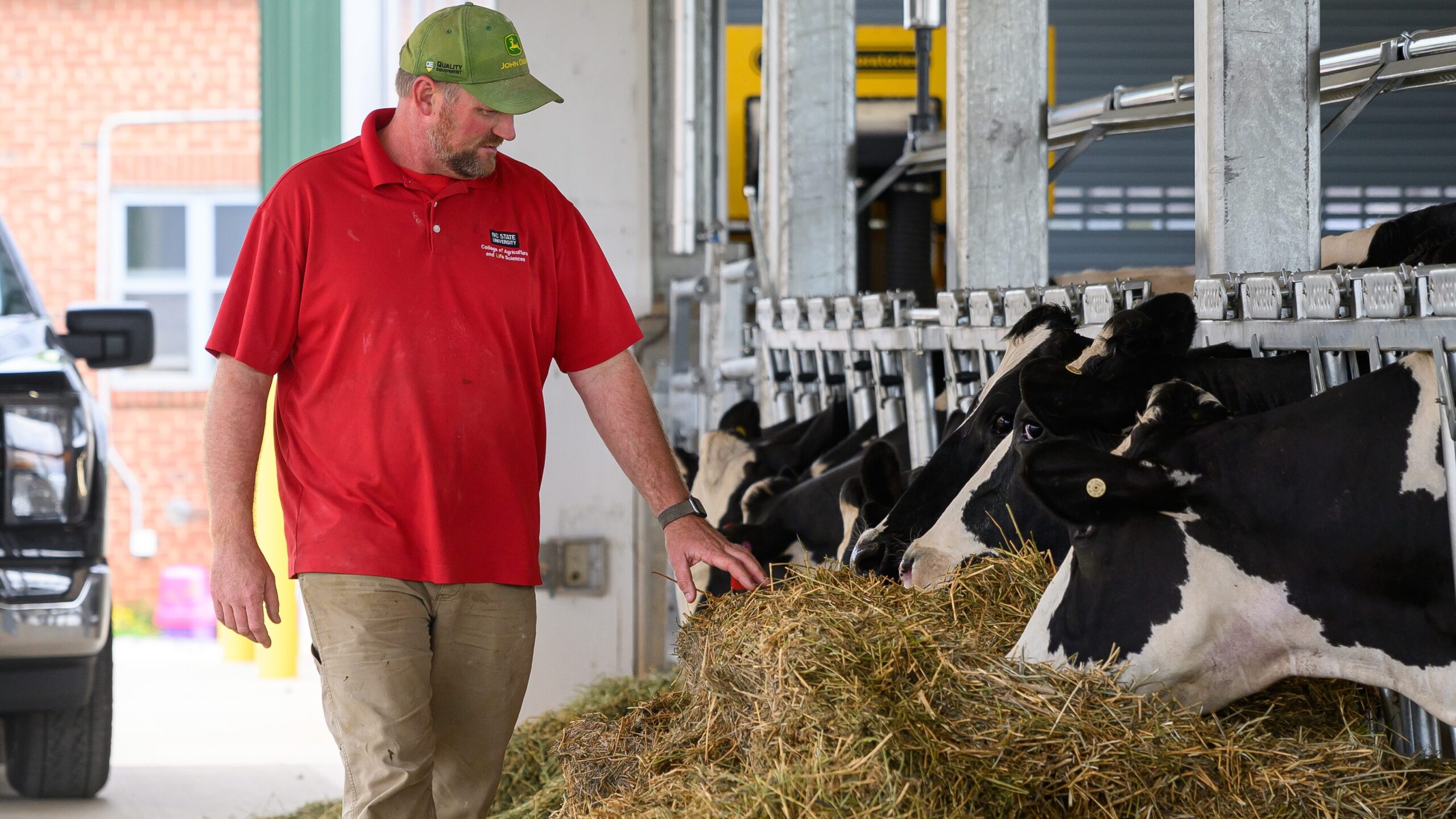
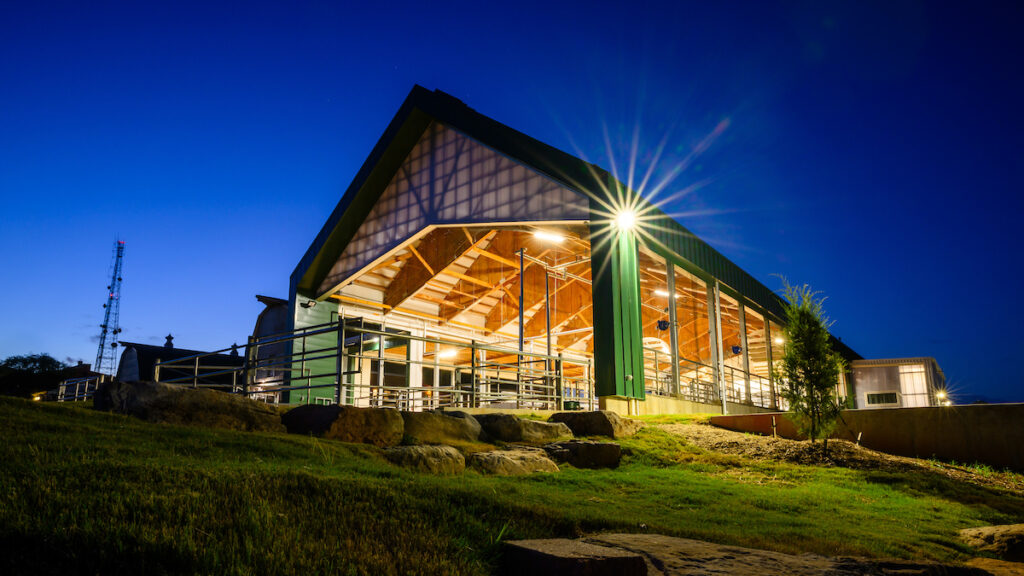
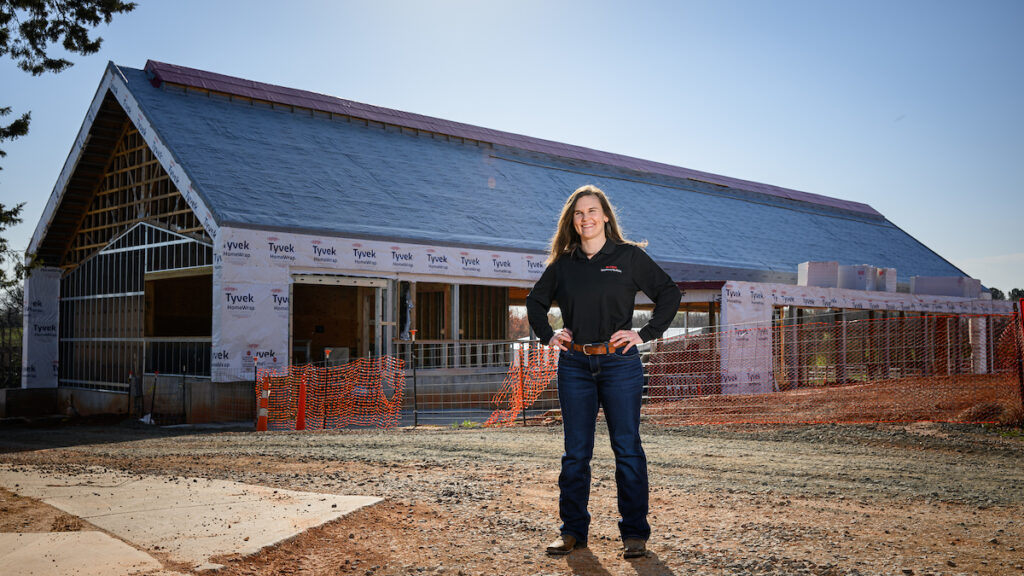
- Categories:
